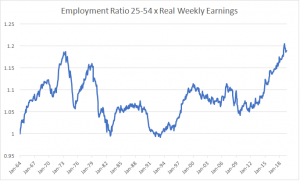Congratulations! You are officially married and get to enjoy all the financial benefits that come along with it. After you’ve had some time to relax after the big day, be sure to consider the following.
- Beneficiary Designations – Update beneficiary designations on any life insurance, retirement accounts, etc., to name your spouse as primary beneficiary.
- Income Tax Withholding – Review the amount you are withholding from your paycheck. You may want to make an adjustment if you plan on filing a joint tax return in 2019. Remember you can file a joint return if you are married by the last day of the calendar year.
- Review the benefits you are receiving, or are eligible to receive from your employer.
- Health Insurance – If only one spouse is working, make sure both of you are covered under your company plan. Most companies only allow their employees to change their insurance elections once a year during their “open enrollment” period. However, exceptions are permitted for certain qualifying life events, which typically include marriage. If you are both working, it may be less expensive to pay for a plan that includes a spouse at one employer rather than paying for two single plans. One of you could even have better coverage than the other. It is in your best interest to review all the options available to you.
- Life/Disability Insurance – You may have declined life insurance or disability insurance coverage when you were single. Now that there is someone else in the picture, you will want to review your options. Even if you are covered by an employer plan, you may want to purchase additional term life insurance coverage which would help to cover any joint debt and provide income replacement for the surviving spouse.
- IRA Contributions – Getting married can affect your ability to save in certain retirement accounts, such as Roth IRAs. Roth IRAs allow you to save up-to the lessor of $6,000/year ($7,000/year if you are 50 or older), or the amount of income you, and or, your spouse earns in 2019. Contributions are made with after-tax money, and investment earnings and gains are not taxed when distributed (unlike with traditional IRAs). Getting married can affect your ability to save in these types of accounts in the following ways:
- Individuals can contribute to a Roth IRA for their spouse as long they file a joint tax return. This allows a spouse who may have not been able, or eligible, to contribute to a Roth before getting married, to benefit from the favorable tax treatment of saving in Roth accounts.
- The ability to contribute to a Roth is reduced when a taxpayer’s adjusted gross income (AGI) reached certain levels for the year. In 2019, someone filing an individual tax return is forced to reduce the amount they can contribute to a Roth once their AGI reaches $122,000, and is no longer eligible to make contributions once their AGI reaches $137,000. These amounts increase to $193,000 and $203,000 respectively, for married couples filing jointly. Therefore, someone who makes over $137,000, but less than $193,000 on a joint return, can now make Roth IRA contributions for both themselves and their spouse.
- There are similar opportunities with regards to traditional IRA contributions. However, because most people are covered by an employer retirement plan, these contribution strategies can be more complex.
While the points above illustrate many of the common planning items that are relevant to newly married couples, each piece is only one part of a comprehensive financial plan. Please contact your Rockbridge advisor with any questions! Keep checking back for more articles as part of the “Life Events” series.



